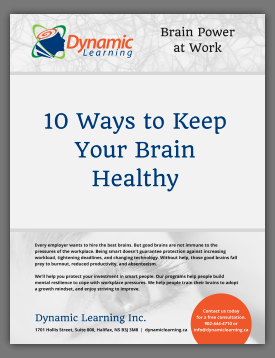Your brain has two functions. One – to keep you alive and safe physically and psychologically. Two – to conserve energy so that it has energy in reserve to deal with threats. Our fast-thinking, automatic brain runs everything that keeps us alive and well – heart, lungs, skin, hair, bones, muscles, digestion, and so on. It handles the constant flow of data through our five senses and keeps everything in balance without needing much input from our executive, thinking brain.
Your brain weighs 2% of your body mass, but it uses 20% of the energy that your body generates. We are alive today because our ancestors were very good at staying alive in a dangerous world by fighting, fleeing, or freezing. And their brains were very good at conserving their precious energy by using thinking habits and short cuts which were very fast, but not always accurate.
We have inherited an exquisitely finely tuned threat response that rarely has to deal with a predator or physical danger. But our executive, thinking brain can trigger that “fight or flight” huge surge of energy by thinking something that our brain interprets as a threat.
We can use this boost of energy to handle whatever difficulties the pandemic offers us.
You are alive today because of the great genes you inherited. But you need your executive brain – your slow thoughtful thinking – to handle the challenges your fast thinking automatic brain often gives you. For instance, when something goes wrong, many of us automatically imagine a “worst-case scenario” outcome. You can handle this by carefully assessing the real probability of a worst-case outcome, taking recognized precautions, and congratulating yourself on your preparedness.
For example, when you hear news about increasing virus infections in your area, you might habitually see yourself in hospital gasping for breath. By turning the news into an imagined life-threatening situation, your brain reacts as if the threat is real and triggers overwhelming fear.
When you find yourself upset, the first step is to ask: “What am I telling myself?” Then think about the probability of whether what you are telling yourself is realistic. For instance, I searched the internet to find out about the probability of me catching and surviving the COVID-19 virus. I found this UK website and even though I am well past retirement age, my survival probability was calculated to be 99.939%.
Of course, I will continue wearing a 3-layer mask with an additional charcoal filter whenever I am in a public space. I will continue washing my hands frequently. And I will follow any other government guidelines to reduce my risk of infection. But I will not stress myself by worrying about a worst-case scenario.
I have just heard that my son and his wife went to be tested for the virus yesterday because they had cold symptoms. We expect to hear the results sometime today, but I am going to continue to think that they will be negative unless I hear differently.
Accept that there are a number of difficulties in your life you cannot control. But you can control how you think about them, how you respond to them.
Notice when you find yourself getting upset, and immediately check your thinking. Perhaps some automatic thoughts popping up like…
- it’s terrible
- they should, shouldn’t
- I must, I have to, etc.
Substitute more rational thoughts like…
- I would prefer that they . . .
- on a scale of 1-10, how bad is it for me right now?
- I prefer to . . . .
You are going to do your very best with the time and energy you have now. You cannot do the impossible, and striving for perfection is striving for the impossible, which is a waste of your time and energy.
Limit your work hours to 8 hours a day, whether you are at home or in a workplace. At home, you can choose which hours you work. Also, choose when you answer emails.
You don’t have to prove you are working by answering emails all day. Prioritize your most demanding, important work to be done early in the morning. Leave emails until just before lunch and just before the end of the day. The faster you reply to emails, the more you will receive. (See Is it Crazy in Your Workplace?) You are a competent, well-respected worker.
In these challenging times, I recommend you schedule time for fun. Make sure you take time for what brings you joy. Many hard-working people procrastinate on taking time for themselves. Having fun will give your body and brain real relief and will leave you with restored energy for your work.
Protect your sleep. While sleep requirements vary somewhat from person to person, most healthy adults need between seven and a half to nine hours of sleep per night to function at their best.
Think six hours of sleep is enough? Think again. Researchers at the University of California, San Francisco discovered that some people have a gene that enables them to do well on six hours of sleep a night. This gene, however, is very rare, appearing in less than 3% of the population. For the other 97% of us, six hours doesn’t come close to cutting it.
As winter rolls in, it is getting harder to exercise regularly, unless you love the cold weather and snow. The pandemic has closed a lot of gyms, but you can still find good workouts online. Add your favourite music and away you go. At the very least, you can climb some stairs.
Use the challenges of the pandemic to energize yourself and to bring your best self forward. You can do it, and later you can count it as one of your many achievements.


